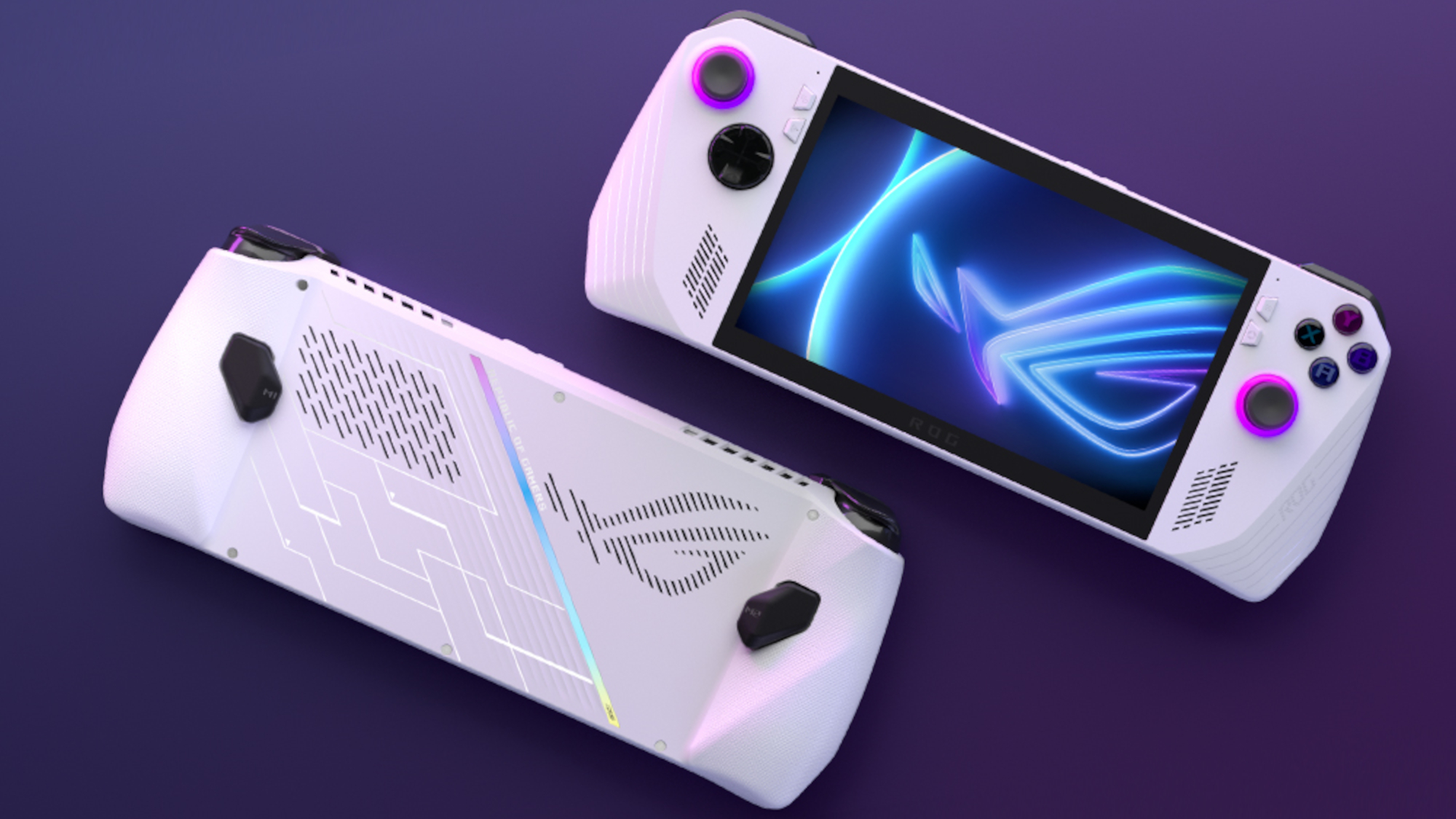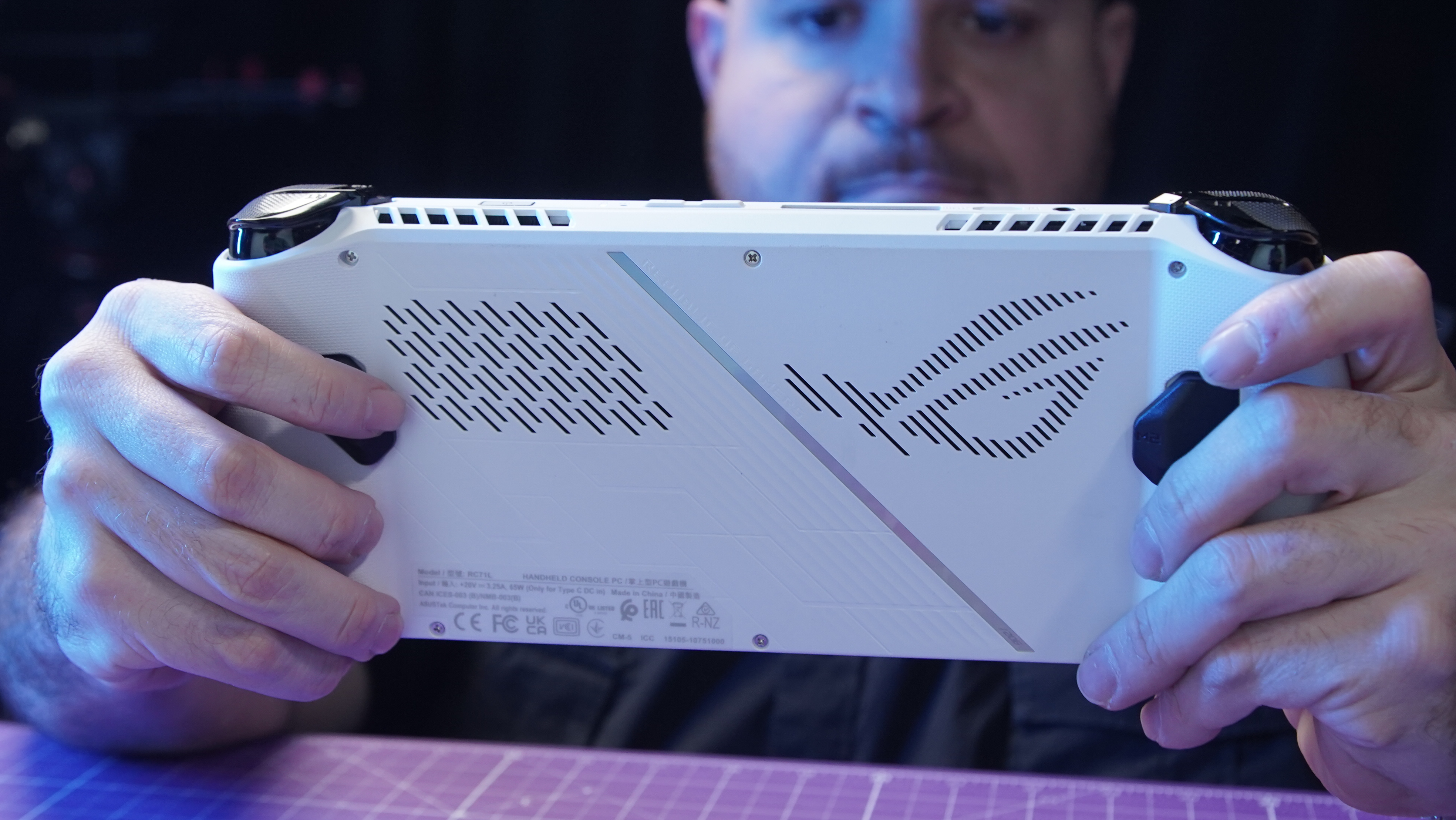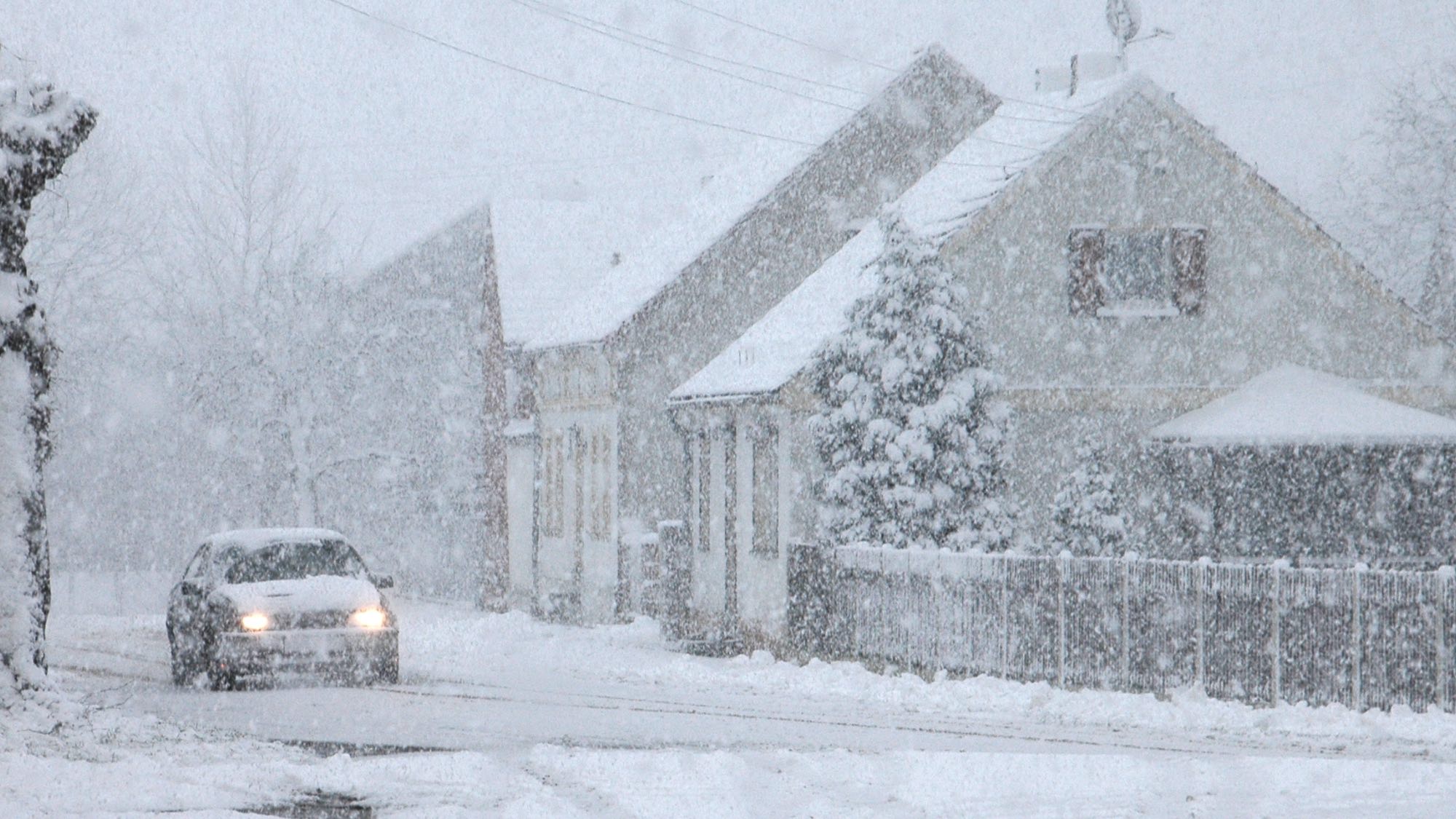Asus ROG Ally: Price, specs, game library and more

The ROG Ally is Asus’ answer to the Steam Deck. The company announced its gaming handheld on April 1, but after some questions about the device’s authenticity, the company assured the world that the ROG Ally was not an April Fool’s joke. It’s a real gaming handheld and it's pretty awesome.
The Asus ROG Ally features the new AMD Ryzen Z1 processors which Asus claims are the fastest AMD APUs yet. On top of that, the ROG Ally has a 1080p 120Hz LCD touch display which is superior to the Steam Deck's 720p 60Hz screen. Based on our Asus ROG Ally review, we think it's a great Windows 11 handheld.
Here's everything you need to know about the Asus ROG Ally.
Asus ROG Ally: Specs
| Header Cell - Column 0 | Asus ROG Ally |
|---|---|
| Price | $699 |
| Chipset | AMD Ryzen Z1 Extreme |
| Storage | 512GB |
| Memory | 16GB |
| OS | Windows 11 |
| Display | 7-inch 1080p LCD touchscreen @ 120Hz |
| Ports | 1x USB-C port, 1x mini SD, 1x PCIe port, 1x headphone jack |
| Size | 11.0 x 4.4 x 0.5 inches |
| Weight | 1.3 pounds |
| Battery life | 1 hour 43 minutes (tested) |
Asus ROG Ally: Price and release date
The Asus ROG Ally is now available from Best Buy for $699. This configuration packs a 7-inch 120Hz 1080p LCD display, an AMD Ryzen Z1 Extreme APU, 16GB of RAM and 512GB of SSD storage. It also comes with a voucher for 3 free months of PC Xbox Game Pass.
A number of accessories are available for the ROG Ally, including the Asus ROG Ally travel case ($39) and Asus ROG charger dock ($64). The handheld is also compatible with other Asus products, including the ROG Cetra True Wireless earbuds ($99) and the Asus ROG Raikiri Pro controller ($169).
Lastly, the Ally works with the Asus ROG XG mobile external GPU. Packing an Nvidia RTX 4090 laptop GPU and a ton of ports, this device is meant to give the handheld a serious boost in power. Unfortunately, this peripheral costs an eye-watering $1,999 on its own.
A $599 configuration with an AMD Ryzen Z1 chip is also listed on Best Buy. Asus says this model will arrive sometime in Q3 2023.
Get instant access to breaking news, the hottest reviews, great deals and helpful tips.
Asus ROG Ally: Design
The ROG Ally has a similar design to the Nintendo Switch and Steam Deck. On the left side, you’ll find an analog stick and a D-pad. On the right, you’ll find the face buttons and another analog stick (at an offset angle). Each side has two vents and two buttons for navigating the user interface.

Along the top, you’ll find power and volume buttons, a PCIe port to connect to the XG Mobile, a USB-C port and a headphone jack. There are also more air vents up top. Lastly, there are two buttons on the handheld’s back and more air vents.
The ROG Ally measures 11.0 x 4.4 x 0.5 inches and weighs 1.3 pounds. In contrast, the Steam Deck measures 11.73 x 4.60 x 1.93 inches and weighs 1.5 pounds. Overall, Asus' handheld is smaller and weighs less than the Steam Deck.
As said in our review, the handheld is great to hold thanks to its light weight and even weight distribution. Its sturdiness makes it feel like a premium product. Using the analog sticks and pressing buttons feels as natural as using a game controller. Because it’s so light, it's easy to hold and use the handheld for hours at a time.
Asus ROG Ally: Display
The ROG Ally has a 7-inch display 120Hz 16:9 display with a resolution of 1920 x 1080. Asus says it can hit 500 nits of brightness. The Steam Deck also has a 7-inch display, but it has a maximum resolution of 1280 x 800 and a 60Hz refresh rate.
When we pointed our trusty Klein-10A colorimeter at the ROG Ally, we found that its display achieved an average of 465 nits of brightness. That’s not far off from the advertised 500 nits of brightness. It’s also far brighter than the comparatively dim 169.7 nits the Steam Deck achieved in the same test.
| Header Cell - Column 0 | Asus ROG Ally | Steam Deck |
|---|---|---|
| Nits (brightness) | 465 | 169.7 |
| sRGB | 108.6% | 68.5% |
| DCI-P3 | 76.9% | 48% |
| Delta-E | 0.17 | 0.25 |
The ROG Ally delivered 108.6% of the sRGB color gamut and 76.9% of the DCI-P3 color gamut (closer to 100% is best) with a Delta-E score of 0.17 (closer to 0 is best). In comparison, the Steam Deck’s display achieved 68.5% of the sRGB color gamut and registered 48% of the DCI-P3 color gamut, with a Delta-E of 0.25.

The ROG Ally’s higher 120Hz refresh rate helps make games run buttery smooth, especially compared to the Steam Deck’s 60Hz. Ghostrunner, which has you traversing around a cyberpunk-inspired city in first person, ran flawlessly, as did the aforementioned Forza Horizon 5. This is the smoothest handheld experience we’ve had yet.
Asus ROG Ally: Performance
The Asus ROG Ally packs a new AMD Ryzen Z1 series processor, which features RDNA3 architecture-based graphics. The new chips feature up to 8 cores and 16 threads and have the efficiency of Zen 4 architecture, according to AMD.
AMD's new processors are built on x86 architecture and are compatible with Windows 11. The company announced the Ryzen Z1 and Ryzen Z1 Extreme. The current Asus ROG Ally packs a Z1 Extreme chip. A model with a Ryzen Z1 processor is expected in Q3 of 2023.
| Row 0 - Cell 0 | Cores/Threads | Graphics | Cache |
| AMD Ryzen Z1 Extreme | 8/16 | 12 AMD RDNA 3 compute units | 24 MB |
| AMD Ryzen Z1 | 6/12 | 4 AMD RDNA 3 compute units | 22 MB |
Asus claims the ROG Ally has double the performance of the Steam Deck. However, in both our qualitative and lab testing, we didn't find this to be the case. Games run great on the handheld, but we expected better performance.

Doom Eternal was the big winner. At 720p, frame rates remained in the high 50s and low 70s, depending on how much action was happening on screen. Frame rates tumbled at 1080p, where they ranged between 35 to 45 fps. That’s close to what we saw on Steam Deck, which tops out at 720p. Switching between 120Hz and 60Hz didn’t affect performance, though 120Hz made the game feel smoother to play.
Spider-Man and Cyberpunk 2077 are both open-world games so it wasn’t surprising that neither achieved similar performance to Doom Eternal. Spider-Man fared best out of the two, with framerates gliding between 35 to 55 fps at 720p and the high 20s and low 30s at 1080p. Cyberpunk 2077 mostly stayed within the 35 to 45 fps range at 720p but barely managed to hit 30 fps at 1080p. The frame rates we experienced at 1080p on the Ally are comparable to the Steam Deck.
Asus ROG Ally: Features
The ROG Ally runs on Windows 11. Because of that, you’re able to run any game or program that’s Windows-compatible right out of the box. This is one of the Ally’s major selling points since the handheld is effectively a small Windows PC. However, this same strength also presents a weakness.
Asus’ Armoury Crate app is the Ally’s closest equivalent to the SteamOS interface, but it’s not nearly as intuitive to use. Armoury Crate lets you see and select all the games you’ve downloaded, regardless of their respective launchers. The app itself works as intended, however, once you select a title, you’re then forced to use its associated launcher.
Asus ROG Ally: Battery life
In our battery test, which involves continuous web surfing at 150 nits of screen brightness, the ROG Ally lasted for 5 hours and 51 minutes. That’s not terrible if you intend to just browse the web, but this is a gaming device first and foremost.
When we ran the more graphically-demanding PCMark 10 benchmark to simulate how long the Ally would last while gaming, the time dropped to 1 hour and 43 minutes. This corresponds to the battery life we experienced during our qualitative testing. Considering how Asus claimed 8 hours of battery life, the real-world results are disappointing.
Asus ROG Ally: Outlook
The Asus ROG Ally is arguably the best Windows 11 handheld on the market. It looks great, is comfortable to play for long stretches, and is compatible with most games on the Windows platform. Its sharp 1080p display and smooth 120Hz refresh rate are also selling points. At $699, it's not a bad deal.
Still, there's room for improvement and we look forward to other iterations of the Asus ROG Ally. The company confirmed this is just the beginning so let's see how it can improve on an already impressive product.
More from Tom's Guide

Tony is a computing writer at Tom’s Guide covering laptops, tablets, Windows, and iOS. During his off-hours, Tony enjoys reading comic books, playing video games, reading speculative fiction novels, and spending too much time on X/Twitter. His non-nerdy pursuits involve attending Hard Rock/Heavy Metal concerts and going to NYC bars with friends and colleagues. His work has appeared in publications such as Laptop Mag, PC Mag, and various independent gaming sites.
